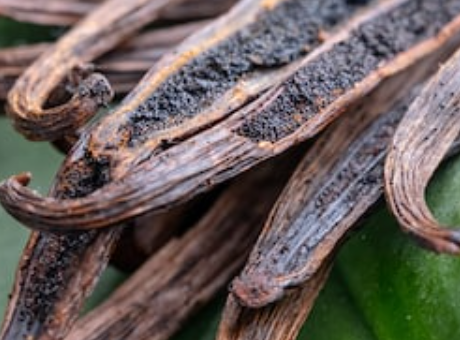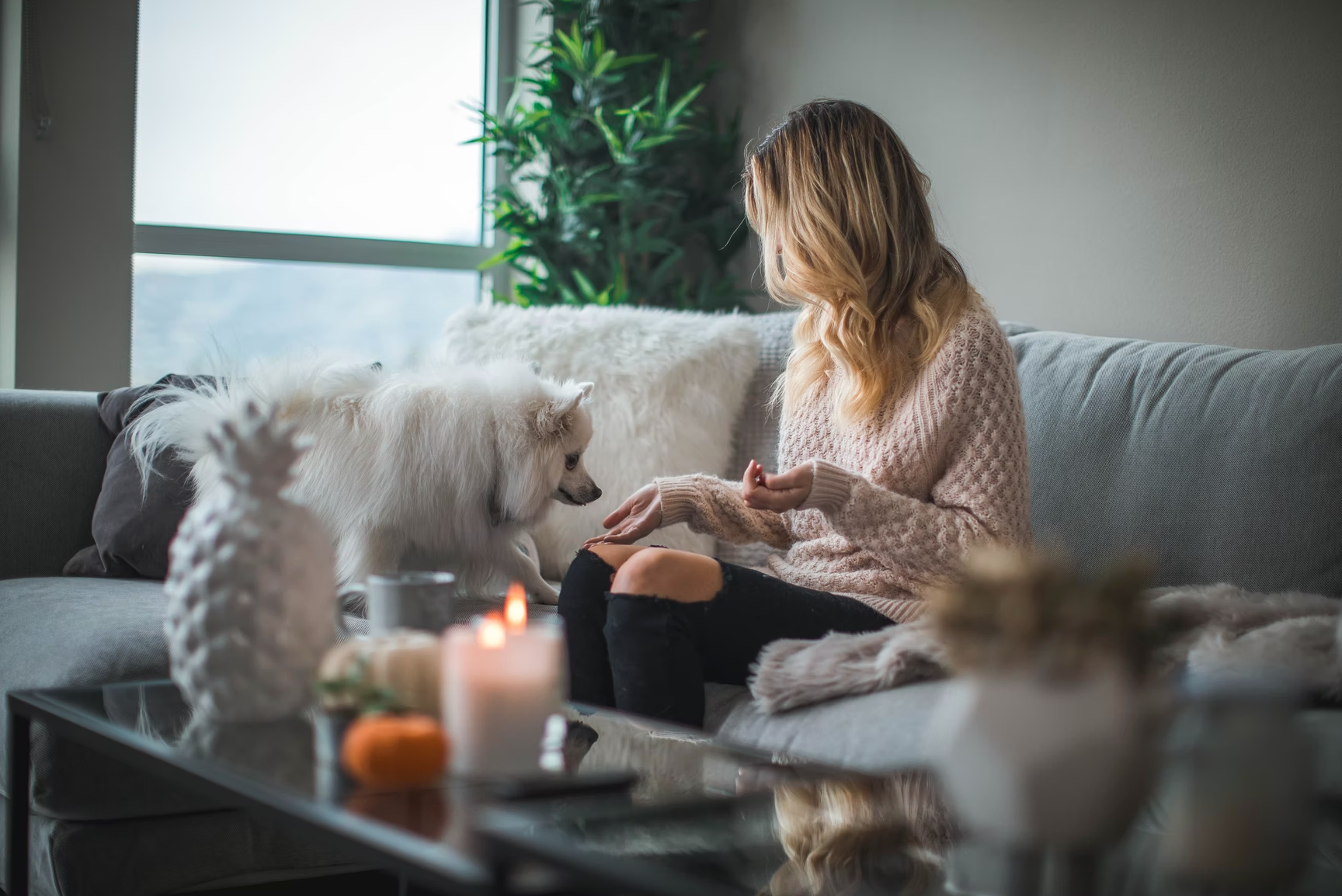Ah, vanilla! The scent that wraps you up in a warm, cozy hug like your favorite blanket on a chilly day. It's the aroma that says, "Hey, life is sweet, and you deserve a treat!" Vanilla isn't just a fragrance; it's a feeling of comfort and nostalgia that transports you to the good old days when you'd sneak into the kitchen to steal a lick of cookie dough.
And let's talk about that "Madagascar Edition." Vanilla from Madagascar? It's like the fancy VIP section of the vanilla world, where the beans are hand-picked, sun-dried, and carefully crafted into an aroma that's as irresistible as freshly baked cookies. It's vanilla with a passport, jet-setting its way into your candles, soaps, and lotions, making everything smell like a tropical island getaway.
So, if you want to give your products a dose of that classic vanilla charm that everyone adores, the Madagascar Edition is your secret weapon. Your customers won't just love it; they'll be indulging in a little slice of scented heaven. So go ahead, unleash the magic of vanilla and let your creations spread smiles and good vibes all around!
Vanilla Bean Fragrance Oil—Madagascar Edition is one of our most loved, best-selling fragrance oils for candle making, soap making and lotion making.

History Of Vanilla
Well, well, well, isn't vanilla just the world's fanciest undercover agent of the orchid family? That's right! Vanilla, the seemingly innocent member of the plant world, is actually a master of disguise, growing on a vine and occasionally revealing its true identity with a dazzling bloom just once a year. It's like the James Bond of flowers, keeping its secrets hidden until the perfect moment.
And let's not forget its globe-trotting adventures! From its roots in Central America, South America, and the Caribbean, it embarked on a whirlwind journey through history, getting conquered by empires like a seasoned explorer. First, the Totonacs nurtured it, then the Aztecs took over, and finally, the Spanish swooped in to introduce it to the European scene. Talk about a well-traveled bean!
Now, here's the real kicker: Vanilla doesn't just roll out of the vine smelling like a dessert dream. Nope, it's a master of patience and transformation. It's like the caterpillar turning into a butterfly, but with a more delicious outcome. After months of curing, drying, and extracting, vanilla blossoms into that sweet, alluring aroma we know and love. It's like the scent version of a superhero origin story.
Oh, and vanilla isn't just a one-note wonder. It's a symphony of molecules within that pod, creating a symphony of flavour that makes our taste buds dance. It's like a secret recipe that only the orchid family knows how to concoct.
And let's not forget its jet-setting lifestyle! Indonesia and Madagascar? The A-listers of the vanilla world. They're like the celebrity chefs of the vanilla-producing scene, delivering those delectable pods to make our candles, soaps, and lotions sing.
So next time you're enjoying the warm embrace of vanilla in your creations, remember the journey it took, the transformations it underwent, and the orchestration of flavours it brings to the table. Vanilla isn't just a scent; it's a saga, a mystery, a symphony, and an invitation to indulge in the sweeter side of life.

Vanillin
Vanillin is like the rockstar of the vanilla world! It's the molecule that steps up to the mic and belts out that signature vanilla aroma, filling our senses with warmth and comfort. It's like the lead vocalist in a band, capturing everyone's attention with its enchanting notes.
But here's the twist in the tale: while the world can't get enough of that wonderful vanilla scent, Mother Nature seems to have set up a VIP lounge for it. Vanilla is like that elusive celebrity you desperately want to meet but can't quite catch. The demand for vanilla is sky-high, but the supply is a bit of a diva. It's like trying to get tickets to a sold-out concert – everyone wants in, but only a lucky few get to experience it.
Now, let's talk about the extraction process. It's like a delicate dance, with ethanol and water partnering up to coax the precious vanilla essence out. Imagine vanilla pods and ethanol swirling around in a graceful waltz, creating that magical elixir we adore. It's a match made in fragrance heaven.
But here's where vanilla shows its true colours – it's a bit of a drama queen when it comes to extraction methods. Essential oil extraction techniques like steam distillation and cold pressing? Not for vanilla. It's like the A-lister who demands a certain kind of treatment. Vanilla is too delicate for those techniques, so it prefers to be pampered with solvents like ethanol. It's like a celebrity enjoying a spa day – all about the luxurious treatment.
So, next time you catch a whiff of that lovely vanilla scent, remember the star molecule, vanillin, and the intricate process it undergoes to reach your nose. It's a story of demand and supply, of delicate extraction methods, and of a fragrance that's so beloved, it's worth every effort to bring it to life.
Vanillin vs Ethyl Vanillin
In the world of fragrances and flavours, sometimes science steps in to create alternatives that are more practical, efficient, and cost-effective. Vanillin, the star molecule behind the vanilla aroma, can indeed be produced in a lab through a chemical process. This synthetic vanillin serves as an ideal substitute for natural vanilla, especially considering the challenges and costs associated with harvesting natural vanilla.
Enter ethyl vanillin, a close cousin of vanillin with a twist. Imagine if vanillin decided to go to a rock concert and turned up the volume – that's ethyl vanillin for you! It's like vanillin on steroids when it comes to potency. It brings a bolder, stronger presence to the fragrance and flavour scene. But remember, it's not just about being louder; ethyl vanillin also introduces a different note to the vanilla party. It's like the wild sibling who adds a unique flavour to the family dynamic.
Ethyl vanillin is indeed an artificial molecule, unlike natural vanillin that comes from the intricate process of vanilla extraction. It's like comparing a fine wine with a signature cocktail – both have their place and charm, but they offer different experiences. Just as you might choose between using real vanilla extract or an artificial vanilla flavour in your baking, the choice between vanillin and ethyl vanillin depends on the desired outcome and the context.
And let's talk about cost – ethyl vanillin often comes with a friendlier price tag compared to natural vanillin, making it a practical option for industries where efficiency and budget are top priorities. It's like opting for a budget-friendly movie night at home instead of a lavish night out.
So, when you encounter that wonderful vanilla scent, whether it's from natural vanillin or its bold counterpart, ethyl vanillin, remember the science and artistry that go into creating these fragrant experiences. It's a journey of innovation, chemistry, and creativity that ensures we can enjoy the delightful aroma of vanilla in various forms.
Vanillin Free Fragrance Oils
You’ve poured gorgeous creamy white candles and packed them away to cure. The room smells like delicious vanilla ice cream! A job well done.
Two weeks later, you go to pack an order and notice they have yellowed or browned. Same story for your bath bombs. You also spent hours making a batch of soap, which turned brown.
Think of it this way. Vanilla pods are green on the vine. They only turn brown as they age.
The component vanillin is responsible for this.
Vanillin happened. It’s natural!
Vanillin is a fascinating compound – it's the star of the show when it comes to vanilla aroma, but it also has some interesting characteristics that can lead to these discolouration effects. When exposed to air and light, vanillin oxidizes, much like how a sliced apple turns brown when left out. This oxidation process is what causes your fragrance oils, candles, bath bombs, and soaps to gradually darken.
The pH level and the presence of other compounds in your products also play a role in this discolouration dance. As the pH becomes more alkaline, the discolouration process can speed up. This is why some products, like bath bombs and soaps, might show discolouration more rapidly than others, like shampoos.
While the colour change might be purely aesthetic and doesn't impact the scent throw or product performance, some creators prefer to maintain the original appearance of their products. And that's why it's so important to be aware of the vanillin content in your fragrance oils. If a fragrance contains vanilla or ethyl-vanillin, you'll know that it has the potential to bring about these colour changes as it ages.
So, while the transformation from creamy white to a warmer hue might not be something we want for our candles, bath bombs, or soaps, it's a natural and inevitable part of the process. It's a bit like watching a flower bloom and change over time – a reminder of the complexity and beauty of the natural world, even in our fragrances and creations.

Fragrances which are high in vanillin may crystalize when it is cold. The appearance of crystals does not ruin the fragrance. It is the vanillin component of the oil separating from cold. The crystals will melt once the fragrance bottle is dipped in warm water and mix back in. No, the fragrance hasn't gone off.
We also have a listing for vanillin free fragrance oils for those who prefer to skip vanillin altogether.
What to do (if anything)
- Package your products in opaque containers or tins with lids and store them out of light. Avoid clear glass. This will reduce light and air exposure to reduce oxidation.
- Dye your product—plan ahead by making your product yellow or create your own brown.
- Use a vanilla stabiliser to avoid discolouration. There is no one size fits all product. There are different versions for lotions, melt & pour soaps and bath bombs. Also, stabilisers will not eradicate discolouration. They will only slow down the rate at which discolouring occurs. In melt and pour soap, you can use a vanilla colour stabiliser. However, it is not recommended for cold process soap, where an antioxidant like rosemary oleoresin would be a better choice. Ensure that the product you choose is fit for purpose. For example, that the product is either water soluble vs oil soluble. There are vanilla stabilizers available for soap making, however, they cannot be used for candles. In which case your own choice is to use only fragrances that are vanilla free if it really bothers you.
- Add a whitener, e.g., titanium dioxide when a fragrance oil has a low vanilla content.
- If all else fails, acknowledge its natural and accept it, welcome it! As makers we can tend towards perfectionism - obsessing over aspects of your final product your clients won't even notice.




Leave a comment
All comments are moderated before being published.
This site is protected by hCaptcha and the hCaptcha Privacy Policy and Terms of Service apply.